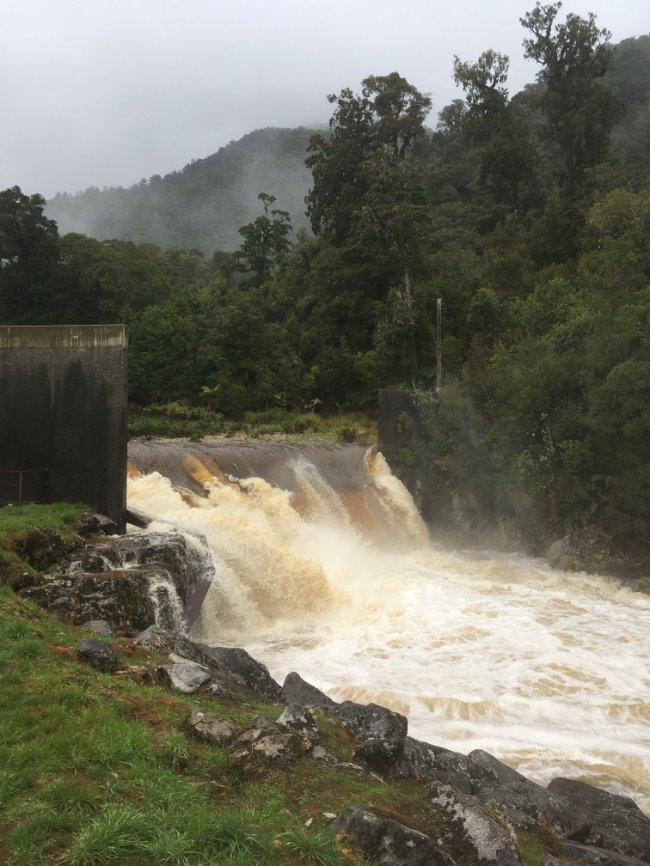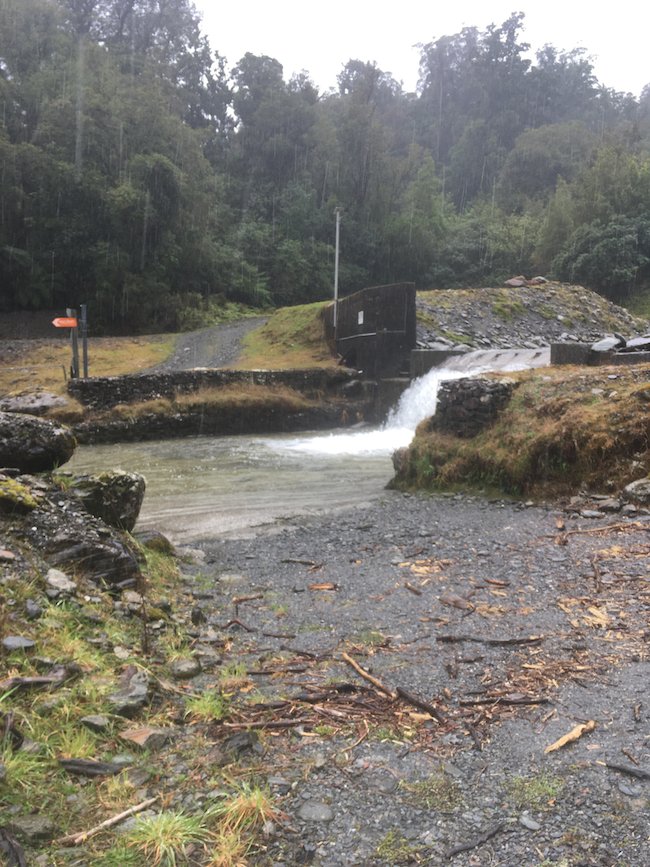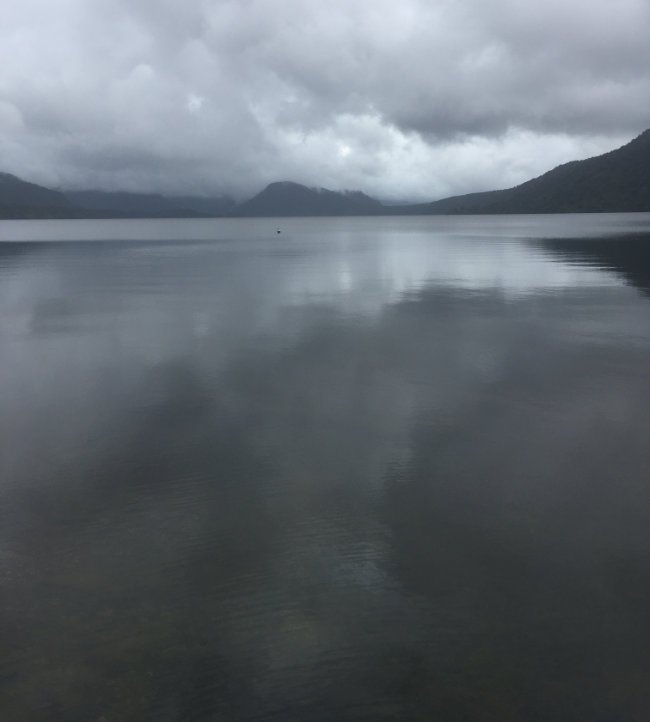Arctic Circle comic strip.
Arctic Circle Cartoon - This might be my favourite cartoon so far this year
Arctic Circle comic strip.
Illustrated Epistle Extract: Coal, Cats and Nudie Calendars on the NZ West Coast
Hey, I'm back!
Not that I really went away this summer, keeping it pretty local in Lyttelton, gardening, surfing with my sister (who has moved here to Christchurch, woop, woop!) and hanging out with her and our other sister and family over the Christmas break. Our only real trips this year have been exploring the rugged West Coast of New Zealand's South Island.
The West Coast is famous for the wild coastline of the Tasman Sea, which stretches for 2,500 miles between New Zealand and Australia, with nothing in between. It's also known for its not-so-tropical rainforest, sandflies, and unpredictable weather. What's less advertised, however, is its attachment to the past. Coal mining remains a major industry, and many homes burn the dirty stuff all year round. Despite being surrounded by breathtaking wilderness, people let their cats roam free to prey on native birds. And though we love local pubs that are rough around the edges, it’s confronting to encounter nudie calendars from two years ago proudly displayed behind the bar.
It's like stepping back in time, but not always in a good way.
So the best of the West Coast is the nature and getting into it. We went to a fantastic, dog-friendly (most of the Coast isn't) campground, called Gentle Annie's, for a few days. It's north of Granity (most famous here for the houses which are being lost to the sea) and smack dab on the beach, next to a beautiful river which Molly and I paddled up without being bitten by too many sandflies. Stunning.
Then the boyf was groundcrew as I pedalled the West Coast Wilderness bike trail from Greymouth to Ross, a total of about 150 km (just under 100 miles in old money) and almost all off-road. The second day was mostly uphill, over 50 km and it didn't stop raining, but I loved it.
—
More about the NZ West Coast Wilderness bike trail in the next post.
This is an extract of my Illustrated Epistle, which goes out once a month-ish. It is a behind-the-scenes look at my cartooning life. I'd love it if you signed up at the bottom of this page, or here:
http://eepurl.com/cCOOeD
Or head to the archive to read more here.
Dropped off at the start of the West Coast Wilderness Bike Trail at Greymouth
New Zealand: West Coast Wilderness Bike Trail from Greymouth to Ross
I recently spent four days biking the West Coast Wilderness trail, and, despite the classic West Coast inclement weather, I loved it. Here's a quick rundown of my journey:
Day 1: Greymouth to Kumara
Only really half day of biking to start. It wasn’t too demanding, but I had less energy at the end of the three hours (much of it stopping to read signs or look at stuff) then on the rest of the trail.
Reminders of the importance of coal mining to the west coast are everywhere, including the smell of coal smoke even in summer
Sadly, I didn't see either
I saw a dead bumblebee on the path in front of me as I left Greymouth. It strangely affected me. As I get older I find these things harder to bear.
The death of nature everywhere.
I pressed on, relying on my gut feeling to guide me when the signs disappeared. Trail markings seemed more consistent later in the trip, or maybe I became better at finding them.
The highlight of the day was the wooded section towards Kumara, where you lose the noise of the road and hear only water and bellbirds. Crossing the gorge was a treat. As was the pub at the end. We stayed in the backpackers, which was a bargain at $50 for the double room.
Gorgeous
Day 2: Kumara to Lake Kaniere
Day 2 was a ride of over 50 km, mostly uphill. Despite the rain (my feet were wet within minutes and the rain crept in to the rest of my gear reaching all but my very core), it was my favourite day of the trip. The West Coast rainforest was stunning, with tree ferns, fun fungi, fern-lined avenues, and beautiful water races. A hare crossed my path to begin with and it seemed like a better omen.
I was guided by a shag (cormorant) flying over the lake as I came into the first shelter for a cup of tea and some River Cottage seedy slice.
Excuse photo quality. My phone doesn't do well in the rain.
After my first stop there was a slow incline. Sometimes it seemed like I might be on the level, even going down, but the tea-stained streams and water races beside the track would be running in the opposite direction.
After the boardwalk the trail goes along a well formed track that has been benched to take most water off it. I was never bogged down in mud like on some trails.
Water running high but not too high
There is a high water route for when the weirs run too high to cycle through. I asked some electric bikers going the other way whether the weirs were open and they said they were but that they were too high for them to go through. Perhaps because they have batteries and electrics that would not do well in the mid calf water I found. It was fun to pedal through them on a pushbike.
Not too deep: one of the river crossings on the West Coast wilderness bike trail
I saw crazy conical blue mushrooms that looked like something out of a weird, land-based Avatar movie.
When I finally arrived at Lake Kaniere, I was grateful for the drying room and hot shower at the homestay. The host, Grant, ran a tight ship, with a list of things to do to keep the place comfortable, including removing our muddy gear and keeping everything closed against the West Coast sandflies.
Grant took us on a guided walk around a local nature reserve with many kahikitea and rimu trees interspersed with tree ferns
Day 3: Lake Kaniere to Hokitika
Lake Kaniere
Day 3 started with a refreshing swim in the lake, with only a diving duck (scaup) for company. Along the way, I saw a South Island tomtit perched on a small tree, and we stared at each other for a few moments before it flew away.
The ride through the beautiful forest was easy and then I was going along the Hokitika river and back to civilisation with a jolt. A huge mass of pipes, concrete and steel embodies the talent Fontera has to make money from turning clean water into milk and dirty run off, before using coal to dry it into powder to ship overseas. But it is jobs and money. We need better jobs and more than just money. Clean rivers would be nice.
Day 4: Hokitika to Ross
The final morning of my trip was spent exploring Hokitika, a town that has suffered through the Covid pandemic and is struggling to get back on its feet now that tourists have returned. I was relieved to leave the shiny, happy and sterile campground (which was recently a natural swamp that was drained and filled in with gravel - isn’t it weird that we call areas like this “reclaimed”?) and get back into nature, although it took some time to do so.
I went over the concrete bridge that has been part of the taming of this wild river mouth and coast which used to wreck a ship every 10 days in the 1860s at the height of the Gold Rush. A time when men who often couldn't swim took their chances to get rich quick. That that gold rush mentality endures in New Zealand. Gold gave way to coal and sheep and now cows.
Then I rode past the golf course before taking a welcome turn into more regenerating nature reserve, escaping into dense thickets of new growth forest being greeted by the sound of bellbirds with traffic muffled, but the pounding surf breaking through.
Autumn on the trail is a great time to see lots of mushrooms like this fly agaric
Bellbirds sang me through the tunnel of trees that were near the wetland of Mahinipua reserve which ends at a weird plantation of tall trees,
A stand of eucalyptus trees that seemed to become impossibly tall before dying. Like a scene out of the Dr. Seuss book. They were part of an experimental plantation of exotic trees that never worked out.
Coming off the tramway track I was annoyed at myself to find I missed the turn for the picnic track to the lake — the only way to see it on this trail. A missed opportunity to swim as well. I didn't want to backtrack and add 4 km to the journey. So onward and out on the tarmac for a fairly easy ride for a few kilometres on a wide road with vehicles giving me a decent amount of room. A kea crossed my path as I cycled toward the Totara Lagoon.
It's a long boring slog along the old rail line to Ross. More than a dozen kilometres with nothing but track and flax for most of it. If I did the trail again I would probably stop at Treetops.
There was a brief reprieve in the monotony when flaxes gave way to show the wider expanse of the lagoon and the hills beyond. It didn’t last long before the flaxes closed back in again. When I got to the end of the rail line I should have headed to the finish but instead I turned right and had a welcome swim at Ross beach. If you stay at its very expensive campground you do have the advantage of being right by the beach. But I turned back to rejoin my other half at another pub before we headed on towards home.
The end of the trail for me was the beach at Ross
Overall I enjoyed the trail immensely and recommend it as one of the best off road rides in New Zealand. My favourite sections were those that were in nature. Even if they were in the rain.
























